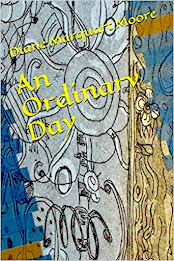 In 2010, Pinyon-Publishing released Adoption, an intriguing novel by Dr. Victoria Sullivan that
appealed to many fans of science fiction. Those fans have been asking for a
sequel to this work of speculative science, and this week, Border Press announced
the publication of Rogue Genes, the
awaited sequel.
In 2010, Pinyon-Publishing released Adoption, an intriguing novel by Dr. Victoria Sullivan that
appealed to many fans of science fiction. Those fans have been asking for a
sequel to this work of speculative science, and this week, Border Press announced
the publication of Rogue Genes, the
awaited sequel.
Adoption explored
the idea of a superhuman race resulting from an in vitro fertilization at a
clinic in Louisiana and featured six-year old Mary, a giant adopted by
Val, a professor of biology who becomes a detective and protector of the
brilliant and beautiful child. Val's research on plant genetics provides
insights into the super race that is soon shunned by the government and a public
that wants to destroy the very different "species" of humans.
In Rogue Genes,
Sullivan continues the story of the superhumans, known as polyploids, who have
been banished to Polysomia, a village in southwest Louisiana. Middle-East
terrorists who want to use the boys as warriors in their country have captured
six five-year old polyploid boys. At five, the boys resemble conventional
humans, known as diploids, but they will soon become nine-foot giants. Because
of an influenza infection of their diploid parents, the boys carry genes for
healing wounds and regenerating limbs, and for synthesizing Vitamin C to keep
them healthy.
Serious questions arise. How did kidnappers enter the
village of Polysomia the night of the kidnapping? Will government agencies help
to find the boys? And who killed a diploid girl and buried her along with a
large sum of money in the woods near the Polysomia guardhouse? Was the killer a
polyploid and the money a pay-off from the kidnappers? How does a full grown
polyploid named Simon, who has violent tendencies, figure in the conflict?
Rogue Genes is a
vivid page-turner that continues the exciting action of superhumans who are
maligned by the world into which they are born, posing ideas about prejudice,
scientific inquiry, and the appropriate treatment of people who cause citizens to
become uncomfortable with human differences ... citizens who wish to eliminate creatures
who don't fit into physical and social pigeonholes. Sullivan achieves an
action-paced work of speculative fiction and presents underlying spiritual
questions about man's inhumanity toward differing fellow humans.
Sullivan is an author and botanist. She studied biology at
the University of Miami and has a Ph.D. in biology from Florida State
University. She has published poetry, flash fiction, numerous botanical papers,
and non-fiction articles. She held a faculty position in the Department of
Biology, University of Louisiana at Lafayette for 20 years. She is a resident
of Sewanee, Tennessee and winters in New Iberia, Louisiana.
Candace Birch, aka "Quala," rendered the beautiful
painting entitled "DNA" on the cover of Rogue Genes.
Rogue Genes is now available on Kindle ($2.99) and in print ($17.50) online at Amazon. Include shipping and handling of $4.50 to order from Border Press, PO Box 3124, Sewanee TN 37375.















